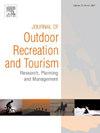迈向数字护林员:利用户外平台的数据检测保护区内的违规行为并改善游客管理
IF 3.6
3区 管理学
Q1 HOSPITALITY, LEISURE, SPORT & TOURISM
Journal of Outdoor Recreation and Tourism-Research Planning and Management
Pub Date : 2024-11-01
DOI:10.1016/j.jort.2024.100835
引用次数: 0
摘要
保护区旨在保护自然和生物多样性,同时也为户外活动和娱乐提供空间。游客管理(最好以游客监测数据为基础)对于平衡保护目标与休闲者的要求至关重要。为最大限度地减少娱乐活动对保护区内自然保护产品的负面影响,最常用的措施是制定相关规定,如禁止游客离开小路,以及对某些小路或区域的准入进行时间限制等。近年来,在线平台和户外应用程序已成为越来越受欢迎的游客监测数据来源,但很少有研究利用它们的数据来检测保护区内的违规行为。本研究利用从在线平台 Outdooractive 和 Bikemap 获得的轨迹数据,分析了德国巴伐利亚森林国家公园内徒步旅行者和骑自行车者的空间分布情况,从而识别并定位违规行为。分析结果表明,最常使用的路径是沿着指定的路径网络。然而,15% 的徒步旅行路线和 31% 的自行车路线不符合国家公园的规定,而是沿着非正式的小路、偏离小路或无视时间限制。徒步旅行者喜欢去的地方还包括山峰、隆起的沼泽、高山牧场、湖泊和溪流,主要集中在海拔较高的地区。骑自行车的人则集中在海拔较低的地区和国家公园的外围。从在线轨迹中获得的知识有助于制定管理策略,更好地引导游客。这些措施可以在实地和网络上实施,以影响户外平台上的内容,并积极主动地向游客传达保护区信息。本文章由计算机程序翻译,如有差异,请以英文原文为准。
Towards a digital ranger: Using data from outdoor platforms to detect rule violations in protected areas and improve visitor management
Protected areas aim to preserve nature and biodiversity while also providing space for outdoor activities and recreation. Visitor management, ideally based on visitor monitoring data, is crucial to balance conservation goals with the requirements of recreationists. Regulations such as prohibiting off-trail movements and temporal restrictions on the access to certain trails or areas are among the most common measures used to minimize the negative impacts of recreation on conservation goods in protected areas. In recent years, online platforms and outdoor apps have become an increasingly popular data source for visitor monitoring, but few studies have made use of their data to detect rule violations in protected areas. In this study, track data obtained from the online platforms Outdooractive and Bikemap were used to analyze the spatial distribution of hikers and bikers in the Bavarian Forest National Park, Germany, and thus to identify and localize rule violations. The analysis showed that the most frequently used trails followed the designated trail network. However, 15% of the hiking tracks and 31% of the bike tracks did not comply with national park rules and instead followed informal trails, were off-trail or disregarded temporal restrictions. Popular places for hikers were identified as well including mountain peaks, raised bogs, mountain pastures, lakes and streams, mainly in areas at higher elevations. Cyclists clustered in areas of lower elevation and on the outskirts of the national park. Knowledge derived from online tracks is helpful in developing management strategies for better visitor steering. Such measures can take place in the field as well as online to influence content on outdoor platforms and proactively communicate protected area information to visitors.
求助全文
通过发布文献求助,成功后即可免费获取论文全文。
去求助
来源期刊

Journal of Outdoor Recreation and Tourism-Research Planning and Management
HOSPITALITY, LEISURE, SPORT & TOURISM-
CiteScore
6.70
自引率
5.30%
发文量
84
期刊介绍:
Journal of Outdoor Recreation and Tourism offers a dedicated outlet for research relevant to social sciences and natural resources. The journal publishes peer reviewed original research on all aspects of outdoor recreation planning and management, covering the entire spectrum of settings from wilderness to urban outdoor recreation opportunities. It also focuses on new products and findings in nature based tourism and park management. JORT is an interdisciplinary and transdisciplinary journal, articles may focus on any aspect of theory, method, or concept of outdoor recreation research, planning or management, and interdisciplinary work is especially welcome, and may be of a theoretical and/or a case study nature. Depending on the topic of investigation, articles may be positioned within one academic discipline, or draw from several disciplines in an integrative manner, with overarching relevance to social sciences and natural resources. JORT is international in scope and attracts scholars from all reaches of the world to facilitate the exchange of ideas. As such, the journal enhances understanding of scientific knowledge, empirical results, and practitioners'' needs. Therefore in JORT each article is accompanied by an executive summary, written by the editors or authors, highlighting the planning and management relevant aspects of the article.
 求助内容:
求助内容: 应助结果提醒方式:
应助结果提醒方式:


